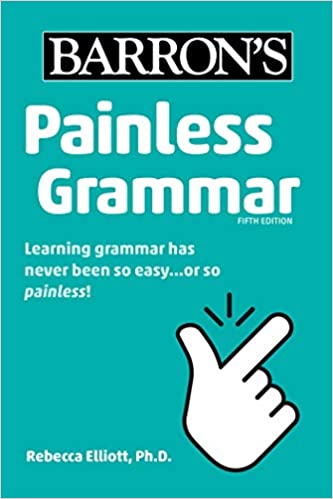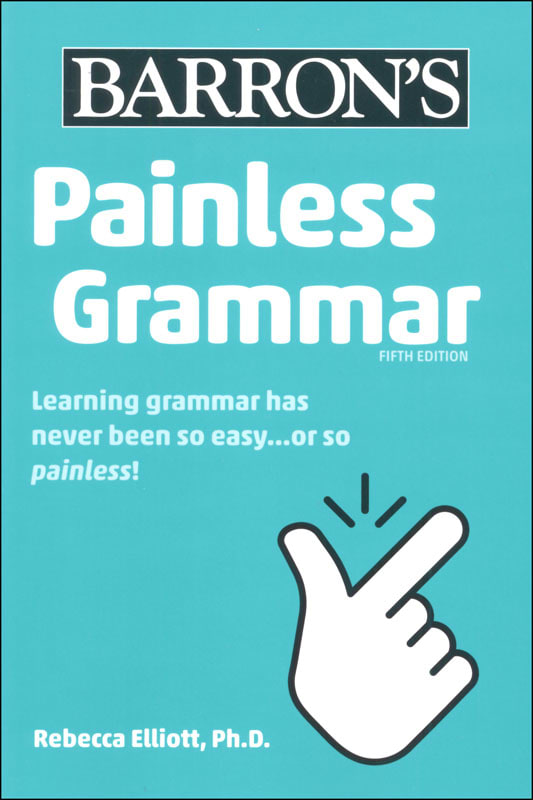"Painless Grammar" sounds like an oxymoron to most of us, but this book certainly makes grammar more inviting than do traditional texts. This 240-page book covers parts of speech, capitalization, punctuation, usage, sentence structure, writing style, and editing, although the writing "lessons" should not be considered comprehensive coverage by any means.
While it does sometimes follow the tradition of defining terms, it uses an informal style of presentation most teens will find engaging: e.g., "Most writers and editors dislike the passive voice. They say it's too blah."
Lots of examples and comparisons demonstrate each lesson: e.g., right and wrong examples, weak and better constructions, and informal language compared with more formal. Common errors are highlighted and dealt with.
Dr. Elliott draws her examples from the familiar world of teens and laces it with mild humor: e.g. The sentence "Wesley was the first person ever to water ski on his head." is accompanied by a cartoon of Wesley water skiing.
Sets of questions called "Brain Ticklers" challenge students to apply what they've learned. (Answers are included in the book.) There are not nearly as many such questions as in a text, but they should be adequate if a student is also applying what he learns in other writing assignments. An index at the back allows students to look up particular concepts. I would recommend this book for any teen who has already studied quite a bit of grammar—probably most high school students. It tends to focus on areas that are continuing problems rather than covering the basics all over again. The efficiency of this approach is appealing since it allows students to spend more time actually writing as they should at the high-school level.
Note: I first reviewed the 1997 edition of this book. The fifth edition, published in 2020, remains much the same, although it has an added section about writing emails.










